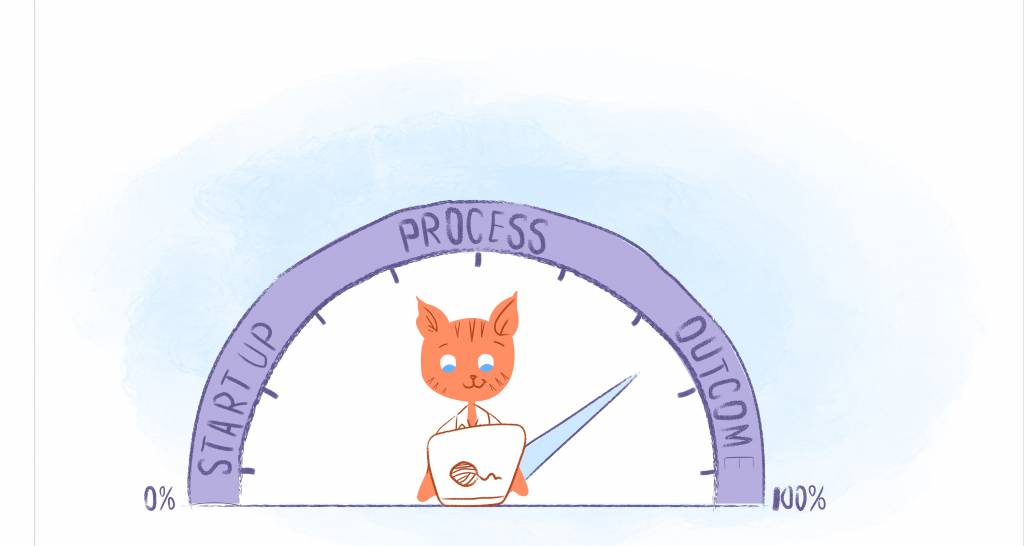

The pressure to continually optimize and excel can be relentless these days. We strive daily to make the best decisions, deliver the best work, and accomplish ever-increasing targets. However, what if there was another way to succeed without constant pressure? This is where satisficing comes into the picture.
Unlike searching for the absolute best, satisfying is choosing the first option that meets your minimum requirements. Consequently, you can conserve your energy and time by finding an efficient solution.
Interested? We thought so. That’s why, throughout this blog post, we’ll cover everything you need to know about satisficing at work. Specifically, we’ll cover the concepts’ benefits and drawbacks of satisficing, and provide practical tips on how to put them into practice effectively.
What is Satisficing?
In 1956, Herbert Simon coined the term “satisfice,” which combines the words “satisfy” and “suffice.” It refers to a decision-making approach based on taking the easy way out rather than striving for greater effectiveness.
The process is simple. When faced with a decision, you establish a set of criteria, also known as an aspiration level. In other words, you choose the first option that meets these criteria. As a result, you don’t waste time and resources evaluating every option or seeking the perfect solution.
It is beneficial in situations involving:
- Time constraints. Rather than getting bogged down in analysis paralysis, satisficing allows you to make timely decisions when deadlines loom.
- Limited information. In cases where you don’t have all the data you would like, satisficing helps you develop a good enough solution.
- Abundant choices. By satisficing when faced with a large number of options, you can avoid decision fatigue and make a more informed choice.
Benefits of Satisficing at Work
If you incorporate satisfaction into your work style, you will enjoy the following benefits:
- Increased productivity. With streamlined decision-making, you can focus on the core tasks while freeing up valuable time and mental energy.
- Reduced stress. It can be mentally draining to be pressured to find the perfect solution constantly. Satisficing relieves this pressure, making the workplace more calm and focused.
- Improved well-being. In addition to contributing to job satisfaction and well-being, completing tasks efficiently can give a feeling of accomplishment.
- Enhanced creativity. By letting go of finding the one “best” solution, you open yourself up to exploring new ideas and approaches, which could lead to more creative solutions over time.
- Better work-life balance. By focusing on efficiency, satisficing allows you to complete your work reasonably, enabling you to devote more time to your personal interests.
In addition, psychologists suggest that aiming for “good enough” may actually make you happier. According to one study, people who opt for jobs that meet their basic needs (satisficers) are happier than those who pursue the highest-paying jobs (maximizers).
Drawbacks of Satisficing at Work
While satisficing has many benefits, it has some drawbacks as well:
- Suboptimal outcomes. Sometimes, a “good-enough” solution may not be sufficient in the long run. You could miss out on potentially better outcomes by not exploring all options.
- Reduced innovation. The pursuit of excellence and innovation can be stifled by overreliance on satisficing.
- Missed opportunities. Choosing to satisfy can lead to settling for mediocrity and sacrificing growth and improvement opportunities.
How to Effectively Satisfice at Work
It is not uncommon for workers to decide in the workplace that specific tasks deserve their full attention or energy. You can develop a successful satisfaction strategy at work with the help of the following tips.
Map it out.
Begin by creating a comprehensive list of your upcoming and ongoing tasks. These would include reports, memos, presentations, and anything else that needs to be done.
Why should you map out your tasks? Visualizing all the work that needs to be done can greatly increase productivity. You can also prioritize tasks, set realistic deadlines, and identify potential overlaps or conflicts.
Furthermore, having a clear overview of your tasks allows you to manage your time and energy more effectively, ensuring that each task has the attention and focus it deserves
Essentials first.
The next step is to prioritize your list. The key is to identify the most critical tasks that must be completed. If you do this, you can devote all your attention and energy to these essential tasks.
When determining which tasks are essential, consider their impact on your overall goals and objectives. Having trouble with this? Ask yourself which tasks directly contribute to achieving your goals.
In addition, consider whether each task is urgent and if it has any deadlines or dependencies. The more time and energy you devote to these essential tasks, the more likely you will accomplish the most important things in life.
Schedule it in.
Once you’ve prioritized, block out time for each task on your calendar. Ideally, you want to give the most time to the most important tasks and the least to the smaller tasks.
Time blocking can be an effective method for scheduling tasks on your calendar. You need to set aside specific time slots for each task to achieve this. As a result, you will be able to concentrate solely on that task without being distracted or interrupted.
Visualizing your schedule allows you to see how your time is allocated at a glance and make any necessary adjustments to ensure that each task receives the attention it needs.
Smart sizing.
If you’re assigning time to smaller tasks, stick to the estimate with the completion time. The reason? Calculating the completion time for smaller tasks allows you to allocate your time and energy more effectively.
Additionally, you can avoid unnecessarily spending time and effort on non-critical tasks by accurately estimating their duration. This will keep your project on track, keep you productive, and allow you to focus on the essential functions that contribute to your project’s success.
Meet the standard, move on.
Rather than focusing on perfection, identify and achieve the minimum requirements for each task. As a result, you can accomplish tasks more efficiently and move on to the next item on your to-do list.
Specifically, you gain more time and energy to work on higher-priority projects that will impact your goals more. Focusing on minimum requirements can eliminate non-critical tasks, such as excessive formatting, overediting, and spending too much time on minor details.
A simple way to make decisions.
Apply the same approach to making decisions. Instead of analyzing every alternative exhaustively, select the one that meets your essential criteria. Then, proceed to the next step.
The ability to make decisions faster and more efficiently allows you to avoid analysis paralysis and save valuable time. When you decide based on your essential criteria and move on swiftly, you can avoid wasting unnecessary time and energy by overthinking.
Additionally, you can progress on other important tasks and projects, ultimately leading to greater success and achievement.
Conclusion
In the workplace, satisfaction is an effective tool for making efficient decisions and reducing stress. The key is to understand its benefits and drawbacks and implement it strategically in order to improve your productivity, well-being, and overall work experience.
Remember, you don’t have to settle for mediocrity to satisfy your needs. It’s all about finding the right balance between efficiency and excellence. By prioritizing and focusing on the most important tasks first, you can accomplish other tasks quickly and efficiently.
FAQs
What is satisficing?
As an alternative to searching for the absolute best option, you satisfy your minimum requirements by choosing the first option that meets them. Rather than spending excessive time and effort on the perfect solution, this means finding a good enough solution.
Why do people satisfice at work?
There are a variety of reasons why people satisfice at work:
- Limited time and resources. The pressure of deadlines and workload sometimes makes it impossible to analyze every option thoroughly.
- Information overload. In today’s information age, research and analysis can easily lead to decision paralysis. However, it is possible to avoid this by satisficing.
- Bounded rationality. We are simply not cognitively capable of weighing all available options perfectly. By satisficing, we can make good decisions within our limitations.
Is satisficing a good thing?
In many situations, satisfying can be a helpful strategy. As a result, you can make more informed decisions, reduce stress, and have more energy and time to dedicate to other things. However, this can result in missed opportunities or overlooked better solutions.
When is satisficing helpful at work?
- Making routine decisions. When it comes to everyday tasks, satisficing can save both time and energy.
- Meeting deadlines. Satisfying your deadlines is a good way to ensure that you get something done on time.
- Limited resources. Within your budget or limited resources, satisficing can help you find a solution that works for you.
When might satisficing not be ideal?
- High-stakes decisions. When making important decisions with significant consequences, optimizing is crucial.
- Long-term projects. A more thorough approach might be required to ensure the best outcome for projects with lasting impacts.
- Innovation and creativity. It is possible that satisfying your needs will limit your exploration and result in more conventional solutions if your goal is to develop groundbreaking ideas.
How can you strike a balance between satisficing and optimizing?
- Define your “good enough” criteria. Before considering an acceptable solution, determine the minimum requirements it must meet.
- Set time limits for decision-making. Before deciding, allocate a specific amount of time to research and evaluate options.
- Consider the potential consequences. When making important decisions, weigh the potential benefits of finding the absolute best solution against the time and effort involved.
Image Credit: Alexander Suhorucov; Pexels











John Hall
John Hall is the co-founder of Calendar a scheduling and time management app. He’s also a keynote speaker that you can book at http://www.johnhallspeaking.com.